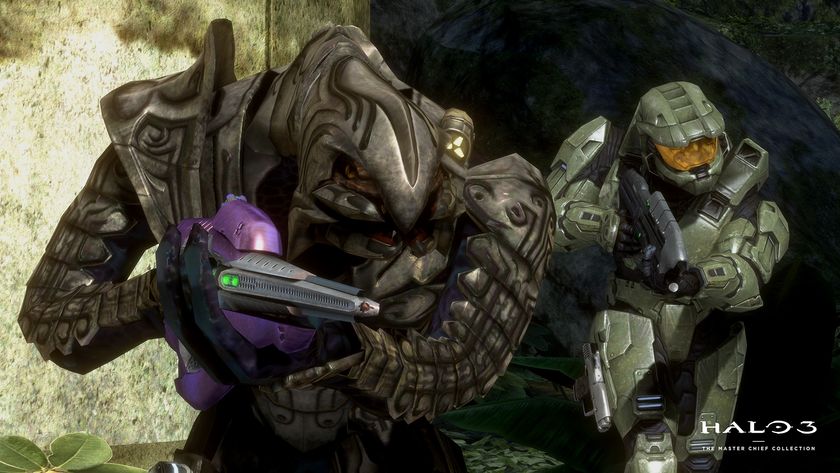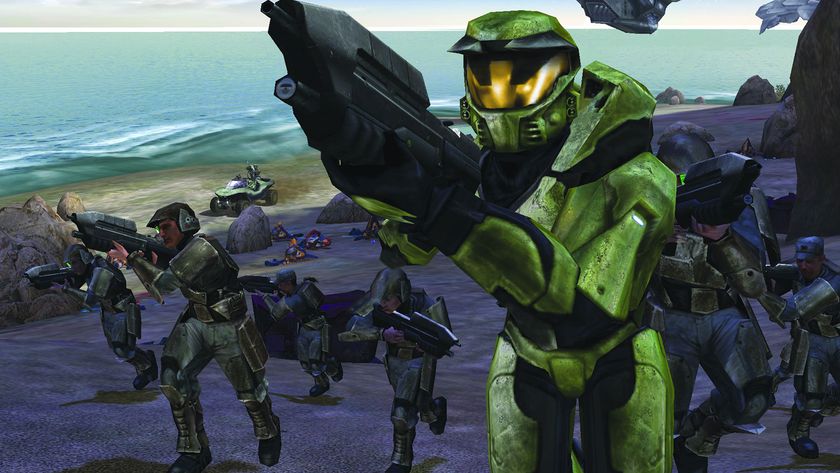Steve Jobs, resolutely handsome at 44, wearing his famous black turtleneck jumper tucked into blue jeans, smiled as he paced the keynote stage of the 1999 Macworld conference. It had only been two years since the Apple CEO had returned to the company that he co-founded in 1976. The iPhone was years away. Apple was still regrouping after a stretch of barren, difficult years. Now, at last, Jobs had something to show the world, and he knew that it was something good. “We are starting to see some great games come back to the Mac,” he said. “But this is one of the coolest I’ve ever seen.”
As the lights dimmed and the crowd stilled, an unseen choir struck up a melancholy chant, a haunting melody now oh-so familiar to any player. The widescreen behind Jobs lit up. There, hunched over an assault rifle, poised in green armour, gold visor glinting in the lens flare, stood Master Chief. After a moment, the iconic space marine began to run. First, past a pair of nodding Elite soldiers. Next he climbed into a 4x4, the vehicle we’d later come to know as a Warthog. The car bounced across hills as the camera circled its dips and soars while, overhead, a purple glider performed acrobatic loops against a bruising sunset. Apple, it seemed, was about to change video games.
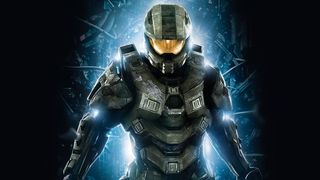
None of this vision came true; at least, none of it apart from the fact that Halo: Combat Evolved was a game-changer. A year later, Microsoft bought the game’s developer, Bungie. Jason Jones, the studio’s co-founder, put the decision to sell to Microsoft down to “the chance to work with a company that took the games seriously”. Before that, he said, “We worried that we would get bought by someone who just wanted Mac ports or who didn’t have a clue.” Jobs was so furious at the news that he reportedly called Microsoft’s CEO Steve Ballmer the same day to complain. But the deal was done. Halo’s team moved to Microsoft’s Millennium Campus in Redmond.
Two years later, Halo launched alongside Microsoft’s Xbox, the company’s first console. While much had changed since that 1999 demo, much had stayed the same. Master Chief was still the protagonist, and hadn’t changed his armour. The choir was still in full voice. But the third-person shooter that Jobs had showed off so proudly was gone. And in its place? A first-person shooter, one that, as its subtitle suggested, would rewrite the rules of the genre.
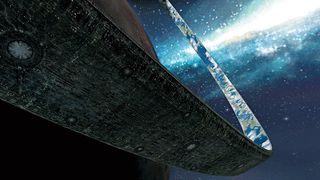
“Every game I’ve ever worked on, I’ve fully believed will come to be regarded as the best one in all of history,” says Marty O’Donnell, the composer who wrote Halo’s memorable soundtracks (his voice, incidentally, can be heard in the choir who first sang out at the Macworld conference). “But as I sat behind closed doors in 1999 and saw the vision of the first Halo game, I was… it was just so powerful.” Michael Evans, who designed the game’s multiplayer modes, agrees. “I think we knew back from the Macworld announcement that Halo was going to be something special. Some within the studio thought we sold to Microsoft for too little. And certainly not everyone at Microsoft believed in the game.
I remember someone at one of the big meetings critiquing the game close to its launch. But it’s hard to know if we could have made it all happen without Microsoft’s support.” Indeed, Combat Evolved had been, if not a troubled project, then at least a confused one for several years before the big move to Washington. At one point, Master Chief had a travelling companion called Blind Wolf, a dinosaur-like creature on whose back the marine could ride. One proposed title was ‘Crystal Palace’. Another, ‘The Santa Machine’.
“The idea was that the Elites were like graceful, predatory cats and the Grunts were like crazy little monkeys,” says Griesemer. “The Covenant are a tool for the users to play around with.” The fine balance of enemy designs and their attack patterns came late, however. “Before we knew what we were making, we had most of the environments in place but none of the enemy encounters,” says Butcher – who programmed the AI, giving the aliens their tumbling, lurching attacks and retreats. “We designed their behaviours that way because we knew we wanted to have wave attacks. In this way, we went from that bunch of concept designs to a full-on console title in a very short time.”
Sign up to the 12DOVE Newsletter
Weekly digests, tales from the communities you love, and more
The influence for these designs, and the wider fiction in which Halo takes place, were drawn from numerous science fiction sources. “There’s a book by Christopher Rowley called The Vang about an alien species that was invading and assimilating people,” says Griesemer. “The Vang were basically The Flood but it took days for their gestation period to transform people.” Halo’s story, which has become increasingly arcane and difficult to follow as the series progressed, was perhaps at its clearest in the first game, which follows Master Chief and his AI companion Cortana, the survivors of a crashed spaceship, as they try to reconnect with other human soldiers and push back the twin invading forces of the Covenant and the Flood. Never before had a developer given the player a sense of being caught up in a war that they were neither driving nor orchestrating. Our role was as much one of spectator as catalyst or solution.
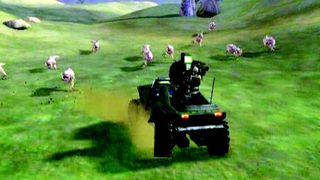
“When we were starting out on PC, we had designs on a much more text-based narrative,” says Griesemer. “Hints of that exist in Cortana’s log books. All of us at Bungie are huge fans of sci-fi literature. Of course there are shades of Iain M Banks’ Consider Phlebas, what with the ship being destroyed. But the influence of something like [Larry Niven’s] Ringworld isn’t necessarily in the design – it’s in that feeling of being somewhere else and the sense of scale. One of the main inspirations was Armor, by John Steakley, in which a soldier has to constantly re-live the same war.”
This wide-angle mythology is grounded in the relationship between Master Chief and Cortana – a kind of platonic love story – and in the camaraderie that develops with the marines you find scattered across the landscape. The soldiers fight alongside you, driving the Warthog or manning its mounted gun while cheering you on. When you lose a man it can be upsetting. “With the marines, we had originally designed their animations vastly different to how they turned out,” says Griesemer. “The initial idea was that when you jumped in the Hog they’d be clinging to the minigun, crying their eyes out. But we wanted to encourage the player, so that’s why we decided to change it and have them hollering and screaming ‘woo-hoo!’. They’re behind you all the way.”
This excitable marine banter composes the majority of Halo’s 8,087 lines of dialogue. But it brings the game world to vivid life, in a way ten thousand scripted cutscenes could never do. O’Donnell’s soundtrack is instrumental in this work too. “From the outset I wanted that soundtrack to be epic,” explains the composer. At the time only a tiny proportion of games employed live orchestras for their soundtracks. O’Donnell pleaded with Bungie. “I said, ‘If you can cover the costs I can get the Chicago Symphony Orchestra and I will make something truly special.’ It paid off. That said, let it be known that I didn’t turn a profit on the first game.”
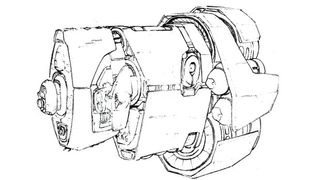
Unlike most other action games of the era, O’Donnell’s soundtrack mixes the bombastic with the tender. “Juxtaposition is a very powerful tool for the composer, one that’s woefully underused in videogames,” explains O’Donnell. “When writing for an action game I think it’s important not to take what is happening on screen for granted from a musical perspective. One must try something unexpected, something fresh and imaginative; something to interest the listeners without distracting them.”
As the game neared launch, Microsoft began to put pressure on Bungie to reconsider the title. “At the time, Microsoft marketing thought Halo was not a good name for a brand,” says Griesemer. “It wasn’t descriptive like the military games we were competing with. We told them Halo was the name. The compromise was that they could add the subtitle. Everyone at Bungie hated it, but it turned out to be a very sticky label… so in hindsight it was a good compromise.”
Bungie continued to make drastic changes to the game, right up to the final few weeks of development, including redesigning the entire final level, in which Master Chief must drive a Warthog at speed through an obstacle course as he tries to escape the destruction of the titular ring. “The escape came about in the last weeks of development,” says Butcher. “We originally had planned just a cutscene with the Chief taking off, but then decided we wanted a real climax. It was originally going to be a driving and fighting section, but we thought that was too much. The real problem was the Warthog. We’d refined it throughout the campaign levels and then suddenly you couldn’t land a jump. We had to really tweak the feedback for that section.”
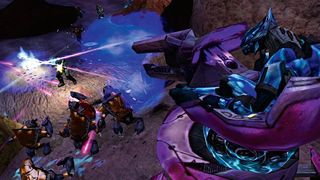
While the game did not launch with online multiplayer, it had one of the best local multiplayer modes of its day, allowing players to link up consoles and play together on separate TVs. This feature also came punishingly late in the day. “I joined Bungie to work on Oni,” recalls Evans. “After we got acquired by Microsoft, we first had to finish Oni. Then we realised we were going to join the Halo team. Hamilton Chu came to me with the idea of having me take over multiplayer, which had been cut. That sounded like a feature we had to ship and I, along with Hardy LeBel, agreed to take it on.”
Working toward the fixed deadline of a console launch meant that Evans and LeBel’s primary enemy was time. “We had a cool engine, some largely working synchronous networking code and a bunch of single-player assets,” explains Evans. “But we basically had no support from the art team and very limited support from the rest of design or the sound team. All the maps were made by contractors, or people sneaking some work in on top of their other jobs.
Despite the pressure, it’s a time that Evans, who now works at Riot Games on League of Legends, looks back upon with much fondness. “Working on Halo was a magical experience, one that I am really glad to have gotten a chance to have been part of. Everyone worked so hard and there were so many super talented people there. We became deeply engaged in the way that teams under fire often do.”
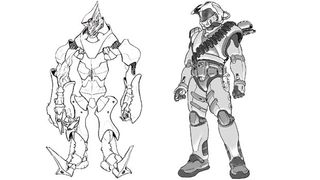
Despite the camaraderie among team members Microsoft had reservations about the game even up to its launch date. “When I remember those days,” says Phil Spencer, then corporate vice president of Microsoft Game Studios, “the game we were really excited about, the game that had the most internal buzz, was Munch’s Oddysee. That was the game we really thought was going to cement our reputation [on Xbox]. Bungie hadn’t done any console stuff, and it was unclear if these Mac guys were going to make the jump.”
Spencer and the others were proved wrong. Buoyed by gushing reviews, the game sold a million units in five months and three million by the summer of 2003. Halo: Combat Evolved earned Microsoft and its brave venture into videogame hardware a respect that would have taken far longer to earn had the game not been part of the Xbox launch lineup. It made a company known as a spreadsheet publisher become known, almost overnight, as a game-publisher with exquisite taste. In this way Halo had a legitimising effect for Xbox, a system that prior to release had been viewed as a bulky folly from a mistrusted outsider.
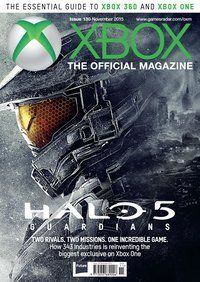
Looking back, that success can be difficult to pinpoint. “There were a lot of very talented people working on Halo, but it was also about timing,” says Griesemer. “I think the world wanted an epic, heroic story in the fall of 2001 – they wanted to see the world saved.” Perhaps, although Halo was hardly the first videogame to send its player off to save the world. Whatever the reason, Halo’s mark on the medium is both clear and lasting, while its stoical space marine protagonist casts a long and enduringly iconic shadow.
Click here for more excellent Official Xbox Magazine articles. Or maybe you want to take advantage of some great offers on magazine subscriptions? You can find them here.
“We were in the south side of Chicago in the fall of ’97,” recalls Bungie’s Marcus Lehto, art director on the game. “We were in an ancient old Catholic girls’ school, on the south side of Halstead. Not a great area, but that was all we could afford.” The company had recently finished work on the real-time tactics game, Myth: The Fallen Lords and another team had gone off to start building Myth II. Jones and Lehto wanted to put the engine they’d created for these to wider use, so they began work on an idea for a new game, that would work with the technology, “a sci-fi real-time strategy”.
The earliest version of Halo was, in some ways, closer to Destiny than the Halo with which we’re now familiar: an ambitious open-world exploration game. “It was a huge world,” says Lehto, “comprised of a block of islands that you could travel to. It was a top-down, ‘lead your troops from the sky’ type of thing.” More members joined the team and, subtly and slowly, the game began to change shape and direction. “As the tech and art made things look cooler, we began to pull the camera closer to the action,” says Alex Seropian, co-founder of Bungie. “The strategy game became a third-person game, which became a first-person shooter.”
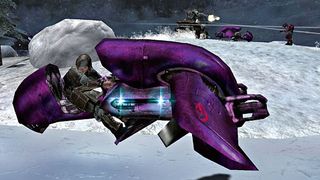
“I think the Warthog is the real reason Halo became an action game,” says designer Jaime Griesemer. “In the old RTS-style game it was just so cool to watch a squad of jeeps driving across the terrain [that] we wanted to drive them ourselves. And then we wanted to get out and run around as an infantry guy – from there it snowballed into what we eventually shipped. In some ways, Halo is the story of the Warthog and the universe we built to drive it around in.”
Nevertheless, the sea change came slowly. Even as late as E3 2000, Halo was still a third-person action adventure, a far cry from what players would experience and fall in love with the following year. When the game became a Microsoft-exclusive, Bungie rewrote the game engine specifically for the forthcoming Xbox. Many of the team claim that it only came together in the final four or five weeks of development, a “perfect storm” as technical lead Chris Butcher describes it, when the Xbox hardware settled into its final form, and drew itself up to the height of Bungie’s ambition.
That ambition, on paper, seems like nothing new: a lone space marine and his ghostly AI companion, Cortana, taking on the might of an alien invasion. This is the kind of story that video games had been telling for decades, since the release of Space Invaders. And yet, here on the ring world upon which much of the game takes place, arcing spectacularly up and overhead in the distant sky, everything felt different, urgent.
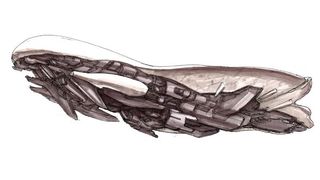
In part, this was thanks to the now-ubiquitous evolutions the game brought to the first-person shooter. There was the rechargeable shield, an ingenious piece of design that makes ducking for cover not only a way to dodge bullets but also a respite in which to recuperate. Ten seconds spent cowering behind a rock or tucked in a doorway is an evasive manoeuvre that allows your shield defences to refill, a simple yet momentous tweak that infuses battles with a rhythm of assault and cover that, in turn, infused the FPS landscape beyond it. That rhythm became so infectious, in fact, that game designers would refer to it as Halo’s 30-second combat loop, a concept that many have tried to borrow since, usually in vain.
Then there was the revolutionary two-weapon limit. Prior to Combat Evolved, most FPS games allowed players to carry around a virtual armoury in their TARDIS-like pockets. Master Chief forced us to select just two guns at any given time. New had to be swapped for old; there was no stockpiling of weapons. This simple restriction added a neat layer of strategy not seen before in the genre, ensuring that every combination of guns chosen changes the fundamental way you approach each battle. Enter a skirmish with a sniper rifle and a pistol and your experience will be different to the one you run into with a shotgun and a Needler, with its shocking-pink homing shards. The reduction in choice revealed itself as a simplification that, in turn, added complexity.
The joy of the game’s mechanics aligned with the game’s enemy designs. Rather than sending out identikit waves, Bungie divided the Covenant into ranks and body types. There are the plucky Grunts, dwarf soldiers with comically tubby arms who will either run at you clutching live plasma grenades in a kamikaze attack, or flee squealing. There are the rangy Elites, with their four-way splitting lips, and guttural war cries. And there are the malformed Flood, shuffling the halls of the notorious Library level, exploding to release a nest of clicking minions.
The official source for everything Xbox One, Xbox 360, and Xbox Series X. We're also a magazine, covering all things Xbox in the UK and the US. Originally established in 2001, the magazine was discontinued in April 2020.

